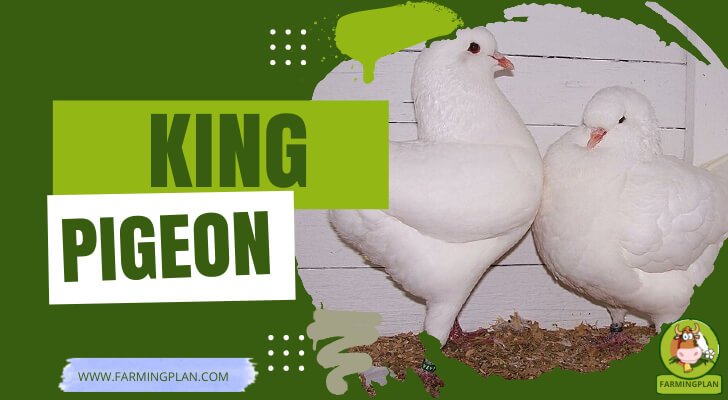King Pigeon Pose (Eka Pada Rajakapotasana) is a transformative yoga pose that targets deep flexibility and strength, making it a favorite among advanced practitioners. This pose is an excellent choice if you want to stretch your hips, legs, and back. King Pigeon provides a powerful stretch while enhancing posture and relieving stress. Whether you’re a beginner or a seasoned yogi, mastering King Pigeon can elevate your practice. This guide will walk you through its benefits, techniques, and tips for making the most of this fantastic pose, helping you improve your flexibility over time.

What is King Pigeon Pose?
King Pigeon Pose is a challenging yoga posture that requires flexibility, strength, and balance. It is often considered an advanced pose due to its intensity and the deep stretch it provides. The name “Eka Pada Rajakapotasana” comes from Sanskrit, where “Eka” means “one,” “Pada” means “leg,” “Raja” means “king,” and “Kapota” means “pigeon.” This pose mimics the shape of a pigeon, with one leg bent in front and the other extended behind the body. This pose effectively opens the hips, stretches the lower back, and improves chest flexibility. It can be a great addition to any yoga routine, especially for those who want to improve their flexibility and posture.
The Anatomy of King Pigeon Pose
King Pigeon Pose works on several key muscle groups and joints. Here are the primary areas it targets:
- Hips and Hip Flexors: The pose opens up the hips by profoundly stretching the hip flexors. These muscles are often tight from sitting for long periods, and this Pigeon can help release that tension.
- Quadriceps: The extended leg at the back of the pose is a great way to stretch and lengthen the quadriceps.
- Hamstrings: The front leg, bent at a 90-degree angle, also stretches the hamstrings.
- Back Muscles: King Pigeon backbend engages the muscles in the lower back, helping to increase spinal flexibility and relieve tension.
- Chest and Shoulders: As you lean back and open your Chest, King Pigeon helps improve flexibility in the Chest and shoulders, promoting better posture.
By stretching and strengthening these muscle groups, King Pigeon offers a comprehensive approach to improving flexibility, mobility, and strength.
Read More: Highflyer Pigeon
How to Perform King Pigeon Pose Step by Step
To get the most out of this Pigeon Pose, performing it with correct alignment and control is essential. Follow these steps to safely and effectively practice the pose:
Step 1: Start in Downward Dog
Begin by coming into a Downward Dog pose. This is a great starting point as it stretches the back, hips, and legs.
Step 2: Bring One Knee Forward
From Downward Dog, lift your right leg and bring it forward between your hands. Lower your right knee to the ground behind your right wrist, keeping your shin parallel to the front of your mat. The left leg should remain extended behind you.
Step 3: Extend the Back Leg
Straighten the back leg, extending it thoroughly and keeping the toes pointed downward. Make sure your hips are square to the front of the mat, avoiding any tilting of the pelvis.
Step 4: Lean Back and Lift Your Chest
Slowly lean back, lifting your Chest toward the ceiling. Keep your back straight and avoid rounding the spine. This movement should create a slight arch in the lower back.
Step 5: Option to Clasp the Back Foot
If you feel comfortable and flexible, you can reach back with your hand to grasp the top of your back foot. This deepens the backbend and increases the stretch across your Chest and quads.
Tips for Alignment:
- Keep your hips aligned and avoid letting them fall to one side.
- Ensure your back leg remains active and engaged throughout the pose.
- Keep the shoulders relaxed and avoid scrunching them up toward your ears.
King Pigeon Pose Benefits
King Pigeon Pose is more than just a stretch—it offers a range of physical and mental benefits. Here are some of the top advantages:
- Opens the Hips: One of this Pigeon main benefits is its ability to open the hips, releasing tightness and improving flexibility.
- Stretches the Back: The backbend involved in King Pigeon stretches the spine and can help alleviate tension in the lower back.
- Improves Posture: This pose encourages better posture by opening the Chest and lengthening the spine, especially for those who sit for long periods.
- Strengthens the Core: Holding the pose requires engagement from the core muscles, helping to build strength in the abdomen and lower back.
- Relieves Stress: Like most yoga poses, King Pigeon can have a calming effect on the mind. The deep stretches help reduce physical tension and promote relaxation.
- Increases Flexibility: Over time, regular practice of this Pigeon will increase flexibility in the hips, hamstrings, quadriceps, and back.
These benefits make King Pigeon Pose a valuable addition to your yoga practice.
Common Mistakes to Avoid in King Pigeon Pose
To get the most out of King Pigeon Pose and avoid injury, it’s essential to be mindful of your alignment. Here are some common mistakes to watch out for:
- Collapsing the Lower Back: Avoid arching the back too much or collapsing the lower spine. Maintain a neutral spine and engage your core to prevent strain.
- Misaligned Hips: Ensure that both hips are square and facing forward. If one hip is higher than the other, you may need to use props or modify the pose.
- Overstretching the Knee: Never force the bent knee of the front leg. If you feel any pain or discomfort, ease out of the stretch and reduce the intensity.
- Tensing the Shoulders: Keep your shoulders relaxed and away from your ears. Tension in the shoulders can lead to strain and discomfort.
- Holding the Breath: Always maintain a steady breath while holding the pose. Breathing deeply helps you deepen the stretch and relax into the pose.
You can practice King Pigeon safely and effectively by being mindful of these mistakes.
Read More: Galatz Roller
Modifications and Variations of King Pigeon Pose
King Pigeon Pose can be modified to suit different levels of flexibility and experience. Here are some variations and modifications:
Beginner Variations:
- Use Props: Place a block or cushion under the hip of the bent leg for extra support.
- Shallow Backbend: Instead of leaning back too far, keep the Chest upright or gently lean back, depending on your flexibility.
Intermediate Variations:
- Deepen the Backbend: If you have more flexibility, you can deepen the backbend and hold the back foot with your hand.
- Open the Chest More: Use your hands to press into the floor and lift your Chest higher.
Advanced Variations:
- Full King Pigeon: In this variation, you reach for the back foot with both hands, increasing the backbend and chest opening.
- Add Arm Extensions: From the backbend, extend your arms overhead or out to the sides to deepen the stretch and challenge your balance.
Tips for Practicing King Pigeon Pose Safely
Before you attempt King Pigeon Pose, consider these essential tips for a safe and effective practice:
- Warm-Up: Warm up your body with gentle stretches that target the hips, quads, and back. Poses like Downward Dog, Cat-Cow, and Forward Folds are great warm-ups.
- Use Your Breath: Inhale deeply to prepare for the pose, and exhale as you move into the stretch. Let your breath guide the movement.
- Start Slowly: If you’re new to the pose, start with modifications and gradually work toward the full expression of the pose over time.
- Listen to Your Body: Never force yourself into the pose. Remove the pose and try a gentler version if you feel discomfort or pain.
- Consult a Teacher: Practice with a certified yoga instructor who can offer guidance on alignment and modifications.
How King Pigeon Pose Helps Improve Flexibility
King Pigeon Pose is a fantastic way to improve flexibility, especially in the hips, lower back, and legs. Here’s how it helps:
- Hip Flexibility: The deep stretch in the front leg and hip flexors helps release tightness in the hips, making it easier to sit, squat, and perform other yoga poses.
- Back Flexibility: The backbend stretches the spine and helps increase mobility in the lower back. It can also relieve chronic back pain caused by stiffness.
- Leg Flexibility: The pose stretches the quadriceps and hamstrings, improving leg flexibility.
If you practice King Pigeon consistently, you will notice significant improvements in your overall flexibility.
Read More: Russian Tumbler
Incorporating King Pigeon Pose into Your Yoga Routine
King Pigeon can be included in your yoga routine in a few different ways:
- Warm-Up or Cool-Down: King Pigeon works well as part of your warm-up or cool-down routine. It stretches the hips, back, and legs, preparing the body for more intense poses or releasing tension at the end of your session.
- Flexibility Sessions: If your goal is to increase flexibility, include King Pigeon as one of the primary poses in your practice. Pair it with other poses like Forward Fold and Downward Dog.
- Daily Practice: With consistent practice, King Pigeon can help improve your flexibility and mobility in everyday activities.
FAQ
What is King Pigeon Pose?
King Pigeon Pose (Eka Pada Rajakapotasana) is a deep yoga stretch that opens the hips, back, and chest while increasing flexibility.
Is King Pigeon Pose suitable for beginners?
Yes, beginners can practice King Pigeon by modifying the pose with props and avoiding deep backbends.
How long should I hold King Pigeon Pose?
Hold King Pigeon for 30 seconds to 1 minute, focusing on deep, steady breathing.
Can King Pigeon Pose help with back pain?
Yes, it stretches the lower back and helps relieve tension, improving spinal flexibility.
Should I avoid King Pigeon Pose if I have knee problems?
If you have knee issues, consult a healthcare provider or modify the pose to prevent strain.
Conclusion
King Pigeon Pose is an assertive yoga posture that enhances flexibility, strengthens the body, and promotes better posture. By incorporating this pose into your practice, you can experience deep hip, back, and Chest stretches while relieving tension and stress. While it’s an advanced pose, modifications make it accessible for all levels, allowing gradual progress. Consistent practice and mindful alignment will improve your flexibility and help you achieve better mobility over time. Whether you’re a beginner or an expert, King Pigeon offers remarkable benefits for the body and mind.


